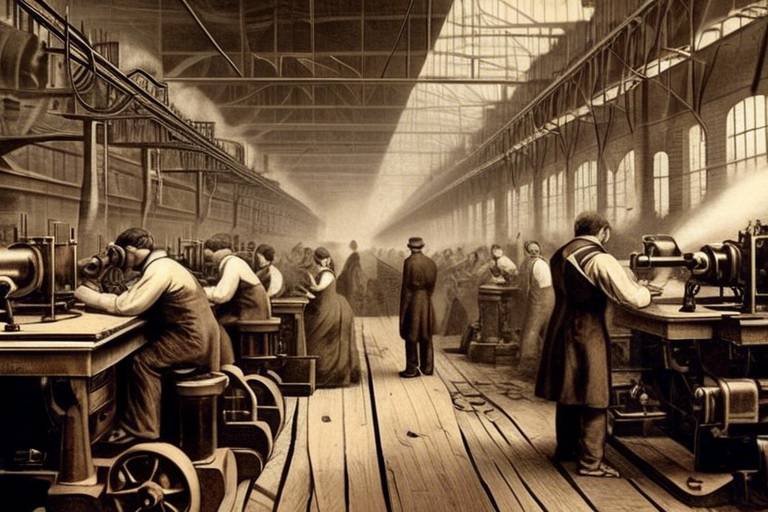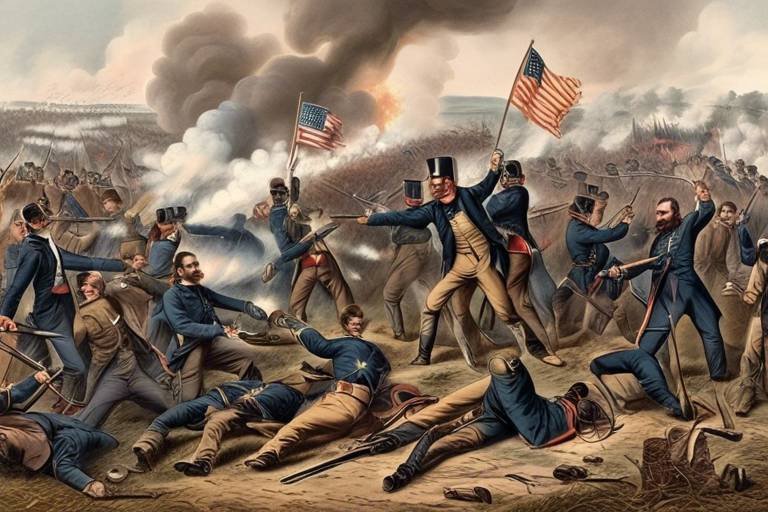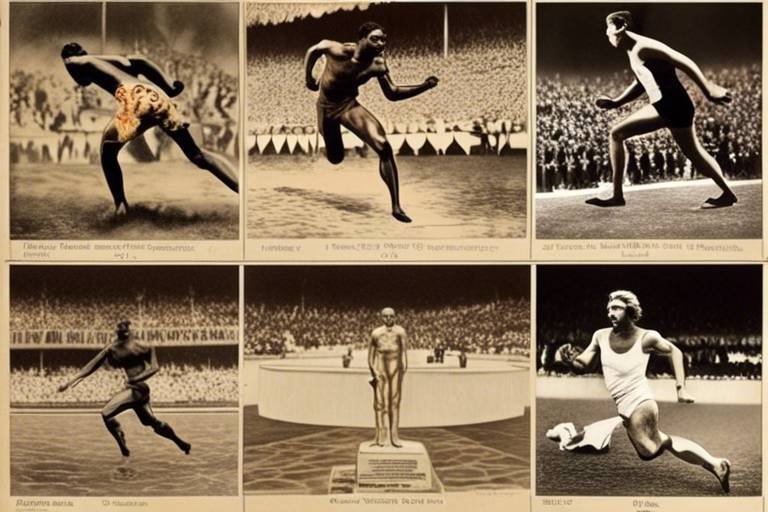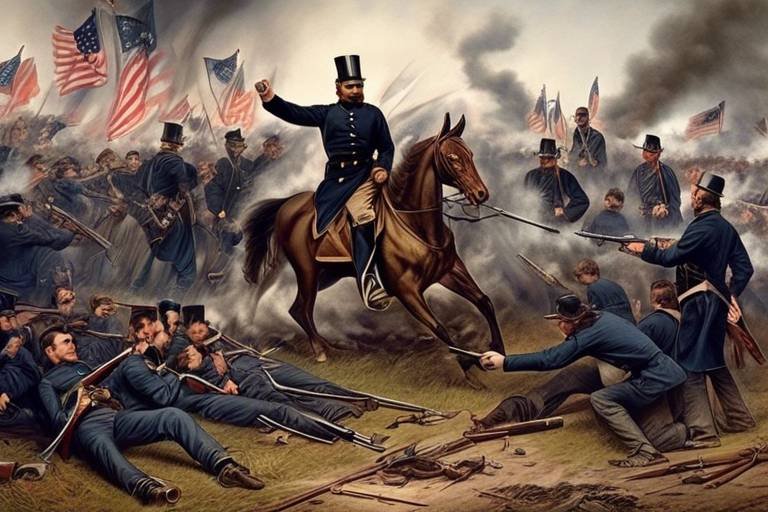The History of the Mongol Empire - Conquests and Legacy
The Mongol Empire, a colossal force that reshaped the course of history through its conquests and enduring legacy, stands as a testament to the power and ambition of Genghis Khan and his successors. Emerging from the vast steppes of Mongolia, the empire's origins trace back to the unification of nomadic tribes under Genghis Khan's visionary leadership.
Genghis Khan, a military genius and strategic mastermind, embarked on a series of conquests that would ultimately stretch from China to Eastern Europe. His unparalleled military campaigns, marked by swift and brutal tactics, led to the establishment of one of the largest empires the world had ever seen.
One of the notable legacies of the Mongol Empire was the Golden Horde's presence in Eastern Europe, shaping the region's politics and culture for centuries to come. The empire's successors continued the expansion, conquering territories in Persia, Central Asia, and beyond, reaching the peak of their power and influence.
Under the rule of the Yuan Dynasty in China, the Mongols implemented policies that left a lasting impact on Chinese society, influencing governance, trade, and cultural exchange. The empire's reach extended far and wide, fostering connections and exchanges that transcended borders.
The enduring legacy of the Mongol Empire is evident in the realms of trade, technology, diplomacy, and cultural exchange. The empire served as a conduit for the flow of ideas and innovations across Eurasia, fostering a rich tapestry of cross-cultural interactions and influences.
Despite its remarkable achievements, the Mongol Empire eventually faced internal strife and external pressures that led to its decline and fragmentation. The division among successor states and the eventual dissolution of the empire marked the end of an era, leaving behind a complex legacy that continues to shape our world today.

Origins of the Mongol Empire
The trace back to the nomadic tribes of the Mongolian steppes, a harsh and unforgiving landscape that shaped the fierce and resilient nature of its people. These tribes, known for their expert horsemanship and mastery of the bow, lived in a decentralized manner, with various clans vying for supremacy.
Amidst this fragmented society emerged a visionary leader, Genghis Khan, whose charisma and military prowess united the Mongol tribes under a single banner. Genghis Khan, born as Temüjin, rose to power through a series of strategic alliances and conquests, earning the loyalty of his followers through both fear and respect.
Under Genghis Khan's leadership, the Mongols embarked on a campaign of conquest that would reshape the known world. His military strategies were revolutionary, utilizing speed, deception, and coordination to outmaneuver larger and more established empires. Through a combination of military might and diplomatic cunning, Genghis Khan forged an empire unlike any seen before.
The unification of the Mongolian steppes under Genghis Khan marked the beginning of a new era, one characterized by the relentless expansion and conquests of the Mongol Empire. With a formidable army at his command, Genghis Khan set his sights on neighboring territories, laying the foundation for what would become one of the largest empires in history.

Genghis Khan's Conquests
Genghis Khan, the legendary leader of the Mongol Empire, was renowned for his unparalleled military conquests that reshaped the map of Eurasia. His campaigns were marked by strategic brilliance, fierce determination, and unmatched brutality, earning him a fearsome reputation that echoed across continents.
Under Genghis Khan's leadership, the Mongol Empire expanded at an unprecedented pace, carving out vast territories through a combination of military might and tactical acumen. From the steppes of Mongolia to the heart of China, Genghis Khan's armies swept across lands, leaving a trail of destruction and awe in their wake.
One of the key elements of Genghis Khan's conquests was his innovative military strategies, which revolutionized the art of war during his time. He utilized a highly organized and disciplined army, combined with swift cavalry attacks and psychological warfare tactics, to overwhelm and subdue his enemies.
The conquests under Genghis Khan were not just about territorial expansion but also about the dissemination of Mongol power and influence. Through a series of decisive victories, he established a vast empire that spanned from the Pacific Ocean to the Caspian Sea, imposing Mongol rule on diverse populations and cultures.
Moreover, Genghis Khan's conquests were not limited to a specific region or civilization. His armies ventured into distant lands, reaching as far as Eastern Europe, where they clashed with formidable opponents and left a lasting impact on the course of history.
Overall, Genghis Khan's conquests were a testament to his visionary leadership, military prowess, and ambition to create a dominant empire that would endure for generations to come. His legacy as a conqueror and empire-builder continues to fascinate historians and enthusiasts alike, showcasing the power of one man to shape the destiny of nations.

The Golden Horde in Europe
The Golden Horde, a powerful Mongol khanate, established its presence in Eastern Europe following the death of Genghis Khan. Led by Batu Khan, a grandson of Genghis, the Golden Horde swiftly conquered vast territories, instilling fear and awe in the hearts of European rulers. The Mongol warriors, known for their fierce tactics and military prowess, swept through Russian principalities, leaving a trail of destruction in their wake.
As the Golden Horde expanded its dominion, it imposed tribute on the conquered lands, extracting wealth and resources to sustain its empire. The once prosperous cities of Eastern Europe fell under the rule of the Mongols, transforming the political landscape of the region. The strategic positioning of the Golden Horde allowed it to control key trade routes, influencing commerce and diplomacy between East and West.
The impact of the Golden Horde on European culture was profound. The Mongol presence introduced new technologies, such as the stirrup and composite bow, revolutionizing warfare in the region. Additionally, the exchange of ideas and customs between the Mongols and Europeans fostered a cultural interchange, shaping art, architecture, and language in unexpected ways.
Despite the initial terror evoked by the Golden Horde, the khanate eventually assimilated into the fabric of Eastern Europe. Over time, the Mongol rulers adopted local customs and traditions, creating a unique blend of Mongol and European influences. The legacy of the Golden Horde endures in the historical narratives of Eastern Europe, serving as a reminder of the transient nature of empires and the enduring impact of cultural exchange.

Mongol Successors and the Empire's Expansion
After the death of Genghis Khan in 1227, the Mongol Empire faced a period of transition as his successors took the reins of power. The empire was divided into four main khanates, each ruled by one of Genghis Khan's sons. These successors, known as the Great Khans, continued the expansion of the empire into new territories, further solidifying Mongol dominance across Eurasia.
Under the leadership of Genghis Khan's immediate successors, the Mongol Empire expanded its conquests into regions such as Persia, Central Asia, and Russia. The empire reached its peak under the reign of Kublai Khan, who established the Yuan Dynasty in China in 1271. The Yuan Dynasty marked a significant chapter in the Mongol Empire's history, bringing Chinese civilization under Mongol rule and influencing the region's culture and society.
One of the most notable achievements of the Mongol Empire's successors was the establishment of the Ilkhanate in Persia. Ruled by Genghis Khan's grandson Hulagu Khan, the Ilkhanate played a crucial role in the spread of Islam and the promotion of trade along the Silk Road. The Ilkhanate's influence extended into the Middle East, shaping the region's political landscape and fostering cultural exchange between East and West.
As the Mongol Empire expanded under the leadership of Genghis Khan's successors, it encountered diverse cultures and civilizations, leading to the exchange of ideas, technologies, and goods. The empire's expansion facilitated the flow of trade and knowledge across vast territories, contributing to the development of diplomatic relations and the dissemination of innovations in areas such as astronomy, medicine, and architecture.
Despite the remarkable achievements of Genghis Khan's successors in expanding the Mongol Empire, internal conflicts and external pressures eventually led to the fragmentation of the empire. The division among the khanates, coupled with the emergence of powerful regional rulers, weakened the unity of the Mongol domains and paved the way for the gradual decline of the once-mighty empire.

The Yuan Dynasty in China
The Yuan Dynasty in China marked a significant period in the history of the Mongol Empire, as it established Mongol rule over China and had a lasting impact on Chinese society. Under the leadership of Kublai Khan, the grandson of Genghis Khan, the Yuan Dynasty became the first non-Chinese dynasty to rule the entire Chinese territory. Kublai Khan's conquest of China led to the unification of the country and the establishment of a new political order.
One of the key features of the Yuan Dynasty was its adoption of Chinese administrative practices and institutions, which helped in the efficient governance of the vast empire. The Mongol rulers implemented policies to promote cultural assimilation, encouraging intermarriage between Mongols and Chinese, and supporting the arts and literature. This cultural exchange resulted in the blending of Mongol and Chinese traditions, creating a unique cultural landscape during the Yuan Dynasty.
Moreover, the Yuan Dynasty played a crucial role in facilitating trade and communication between China and the rest of the world. The establishment of the Silk Road during this period enhanced economic ties with the West, leading to the exchange of goods, technologies, and ideas. The Mongol Empire's control over vast territories allowed for the movement of people and goods across Eurasia, contributing to the flourishing of commerce and cultural exchange.
Despite its achievements, the Yuan Dynasty faced challenges in maintaining control over its vast empire. Internal strife, administrative corruption, and resistance from the Chinese population weakened the dynasty over time. The Yuan rulers struggled to balance the demands of their Mongol heritage with the expectations of their Chinese subjects, leading to discontent and rebellions.
In conclusion, the Yuan Dynasty in China exemplified the Mongol Empire's ability to adapt to diverse cultures and govern vast territories. Its legacy is evident in the cultural fusion that occurred during this period, shaping the future development of China and influencing global interactions. The Yuan Dynasty's reign represents a complex chapter in Chinese history, marked by both achievements and challenges that continue to resonate in the present day.

Legacy of the Mongol Empire
After the peak of its power, the Mongol Empire left a profound and lasting legacy that reverberated across continents and through centuries. One of the most significant aspects of this legacy was its impact on trade and commerce. The Mongols established a vast network of trade routes known as the Silk Road, connecting the East and West and facilitating the exchange of goods, technologies, and ideas.
Moreover, the Mongol Empire played a crucial role in the dissemination of technology and innovation. Through their conquests, the Mongols introduced new technologies and agricultural practices to regions they controlled, leading to advancements in various fields. The transfer of knowledge between different parts of the empire accelerated progress and development.
Another key aspect of the Mongol legacy was their impact on diplomacy and international relations. The empire's vast expanse necessitated sophisticated diplomatic strategies to manage diverse populations and cultures. The Mongols developed diplomatic protocols and established diplomatic missions, contributing to the evolution of international diplomacy.
Furthermore, the Mongol Empire played a pivotal role in the exchange of ideas and cultural diffusion. The empire served as a melting pot of diverse cultures, languages, and traditions, fostering a climate of cultural exchange and mutual influence. Art, architecture, literature, and religious practices were among the many aspects that experienced cross-cultural fertilization.
Additionally, the Mongol legacy can be seen in the enduring impact on political structures and administrative systems. The administrative practices of the Mongol rulers influenced governance in regions under their control and beyond. Concepts of centralized authority, bureaucratic organization, and legal frameworks introduced by the Mongols shaped subsequent political systems.

Cultural Exchange and Influence
One of the most significant aspects of the Mongol Empire's legacy is its role in facilitating cultural exchange and influencing the development of art, language, and religion across Eurasia. The vast expanse of the empire allowed for the interaction of diverse cultures, leading to a rich tapestry of shared knowledge and traditions.
Under the Mongol rule, merchants, scholars, and artisans traveled along the extensive trade routes, such as the Silk Road, connecting the East and the West. This exchange of goods and ideas not only spurred economic growth but also promoted the spread of technologies and innovations.
Artistic styles and techniques were also exchanged and blended, resulting in unique creations that reflected the fusion of different cultural influences. For example, the intricate designs of Persian carpets influenced textile production in China, while Chinese ceramics found their way to the Middle East.
Language was another area profoundly impacted by the Mongol Empire's reach. The Mongols themselves adopted various languages from the regions they conquered, leading to linguistic diversity within the empire. This linguistic exchange facilitated communication and the sharing of literature and knowledge among different peoples.
Moreover, the Mongol Empire's influence on religion was profound. While the Mongols practiced shamanism, they were tolerant of other faiths, allowing for the flourishing of Buddhism, Islam, Christianity, and other religions within their domains. This religious diversity promoted dialogue and understanding among different belief systems.
In essence, the cultural exchange and influence fostered by the Mongol Empire played a crucial role in shaping the interconnected world we live in today. The legacy of shared traditions, ideas, and innovations continues to resonate in the art, language, and religious practices of diverse societies across Eurasia.

The Decline and Fragmentation of the Empire
As the Mongol Empire expanded across vast territories, it faced internal struggles and external pressures that eventually led to its decline and fragmentation. The once-unified empire began to splinter into smaller khanates, each ruled by different descendants of Genghis Khan. This fragmentation weakened the overall power and cohesion of the empire, making it vulnerable to external threats and internal conflicts.
One of the key factors contributing to the decline of the Mongol Empire was the lack of a centralized leadership after the death of powerful rulers like Kublai Khan. The absence of a strong central authority led to power struggles among the various khanates, further destabilizing the empire. Additionally, the vast geographical expanse of the empire made communication and governance challenging, leading to administrative difficulties and inefficiencies.
External pressures also played a significant role in the decline of the Mongol Empire. The empire faced resistance from neighboring states and nomadic tribes, as well as invasions from new emerging powers such as the Ming Dynasty in China and the Timurid Empire in Central Asia. These external threats put a strain on the already weakened empire, hastening its fragmentation.
Furthermore, economic challenges, such as overreliance on conquests for resources and the strain of maintaining a vast empire, contributed to the decline of the Mongol Empire. The empire's extensive trade networks, which had once been a source of wealth and power, began to falter as trade routes shifted and new maritime trade routes bypassed the traditional Silk Road.
As the Mongol Empire fragmented into smaller khanates, internal rivalries and conflicts escalated, leading to further disintegration. The lack of a unified vision and the constant power struggles among the successor states ultimately led to the dissolution of the once-mighty empire. By the 14th century, the Mongol Empire had fragmented into separate entities, marking the end of an era of unparalleled conquest and power in world history.
Frequently Asked Questions
- What were the key factors that led to the rise of the Mongol Empire?
The rise of the Mongol Empire can be attributed to several key factors, including strong leadership under Genghis Khan, military prowess, effective strategies, and the unification of the Mongolian tribes. Genghis Khan's ability to consolidate power and his innovative military tactics played a crucial role in the empire's expansion.
- How did Genghis Khan's conquests shape the course of history?
Genghis Khan's conquests had a profound impact on world history, as they led to the creation of one of the largest empires in history. His military campaigns across Asia and Europe reshaped political boundaries, facilitated cultural exchange, and influenced the development of trade routes such as the Silk Road.
- What was the significance of the Golden Horde in Eastern Europe?
The Golden Horde, established by Mongol successors in Eastern Europe, played a significant role in shaping the region's politics, economy, and culture. It introduced new administrative practices, fostered trade connections, and left a lasting legacy on the territories it controlled.
- How did the Mongol Empire contribute to cultural exchange and influence?
The Mongol Empire served as a conduit for cultural exchange between the East and West, facilitating the spread of ideas, technologies, and artistic traditions. It promoted interaction among diverse civilizations, leading to the enrichment of languages, religions, and artistic expressions across Eurasia.
- What factors led to the decline and fragmentation of the Mongol Empire?
The decline of the Mongol Empire can be attributed to a combination of internal strife, succession disputes, overextension of resources, and external pressures from rival powers. These factors eventually led to the fragmentation of the empire into separate khanates and the loss of central authority.



















